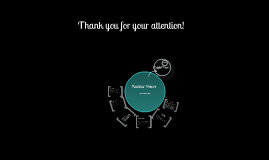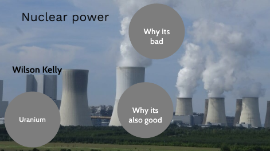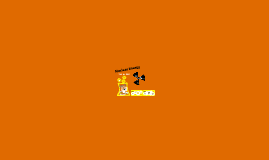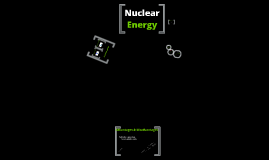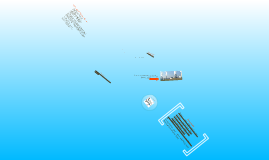Nuclear Power
Transcript: Nuclear Power Nuclear Power is a useful source of energy. It is radioactive. It is created by fission or fusion. About 20% of nuclear power is used in the U.S. with about 100 nuclear power plants. Should nuclear power be the main source for energy? Nuclear power leaves the less impact on the environment compared to oil, gas and coal and is easy to access. But, the effects from a nuclear explosion are devastating and nuclear waste can last for thousands of years. The future of nuclear power is uncertain but it will very likely continue. They might even find a way to create nuclear fusion. So the debate is still going on. Trivia Time! Nuclear Reactors Nuclear Power is a radioactive source of energy created by fission or fusion ~Three Mile Island is located in Pennsylvania ~The Accident happened on March 28, 1979 ~The meltdown let out a lot of radiation On March 11, 2011 a earth quake hit Japan. 3 power plants exploded and 7 reactors had a meltdown. The people who lived near the reactors had to leave there homes. ~ The cooling system was filled with hydrogen gas. How will it affect our future? How will it affect our future Cons of Nuclear Power: ~Very radioactive ~Can explode ~Can melt down ~Nuclear reactors produce nuclear waste In order for a nuclear reactor to create energy, it is necessary for nuclear fission to take place. Uranium is used as the fuel for the reaction as it is radioactive. The uranium atom absorbs a neutron and splits into two equal parts and energy is created. Fission and Fusion Thank you for your attention! Fission is where a neutron goes into a atom, and the atom splits apart into more atoms. So now more neutrons go into the other atoms creating a chain reaction. Fusion is where two atoms, tritium and deuterium fuse together to make an atom of helium. The atom of helium is made because helium has two protons and two neutrons. Deuterium has two particles, one proton and one neutron. Tritium has three particles, one proton and two neutrons when they collide, the extra neutron shoots out and creates energy. Pros and Cons questions? Chernobyl Japan Three Mile Island What is Nuclear Power? Pros of Nuclear Power: ~Takes less resource for the same amount of energy ~Easy to access and use ~Less pollution created Chernobyl is located in Ukraine. On April 26, 1986 a nuclear reactor exploded in Chernobyl, Ukraine.







